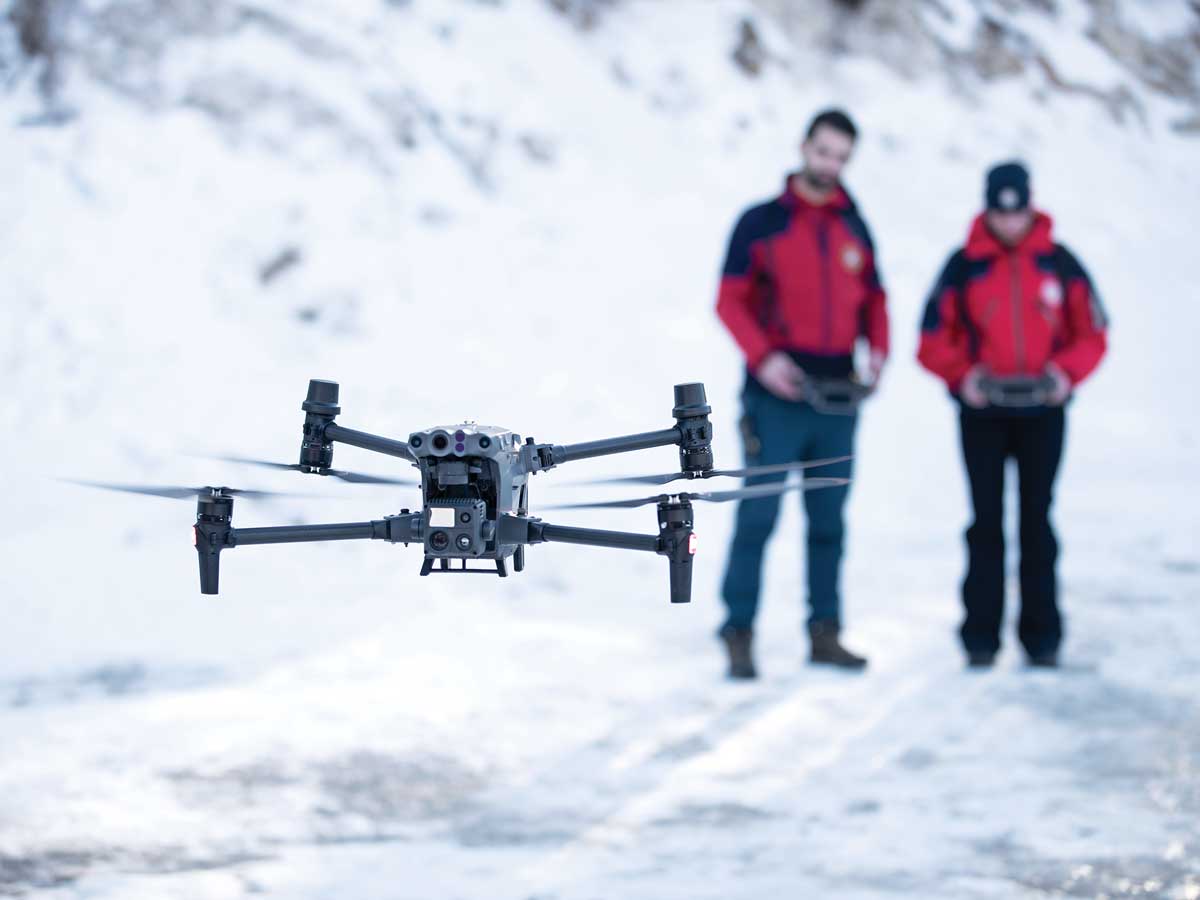
Drones help fight inequity in First Nations communities
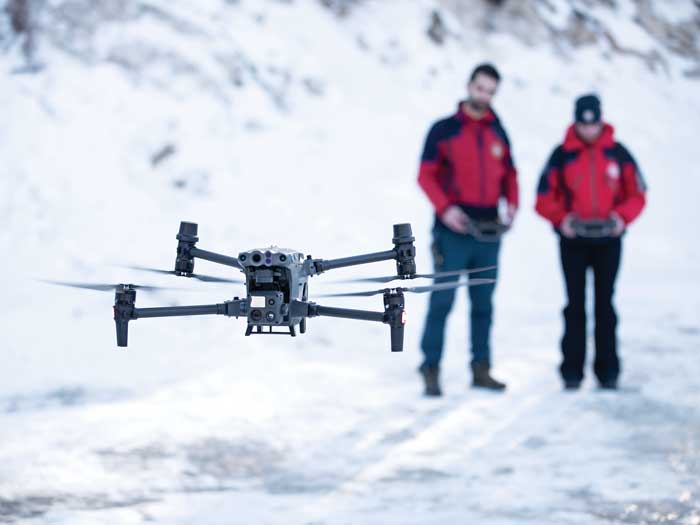 An outdoor drone in action (Courtesy of Indigenous Aerospace)
An outdoor drone in action (Courtesy of Indigenous Aerospace)
In 2016, Norman Shewaybick dragged an oxygen tank on a toboggan for 17 days back home to Webequie First Nation, a fly-in community more than 500 kilometres north of Thunder Bay, Ont.
The walk was an act of protest—Shewaybick’s wife had died after her oxygen tank ran out at the local nursing station. It was their 26th anniversary. Shewaybick had promised his wife no one would suffer as she did.
At the time of her death, the nearest oxygen tank was about 70 kilometres away, “straight as the crow flies,” Jacob Taylor told the CBC last year. The oxygen supply ran out at night, when a helicopter couldn’t make the trip.
The incident was the final piece falling into place for Taylor, founder and CEO of Indigenous Aerospace. After years of health sciences education with a focus on Indigenous populations, along with deal-making between these communities and business interests as head of a development consultancy, Taylor saw a problem he could fix.
“A drone,” he says, “could have made that flight to a new oxygen tank in less than an hour.”
But, Taylor doesn’t want Indigenous communities to merely benefit from the remotely piloted aircraft systems (RPAS) industry, he wants them to lead it.
Taylor wants First Nations to become the pilots, experts and innovators for RPAS in their region—he wants the education, the jobs, the self-sufficiency and an early stake in a nascent, game-changing, technology-rich industry.
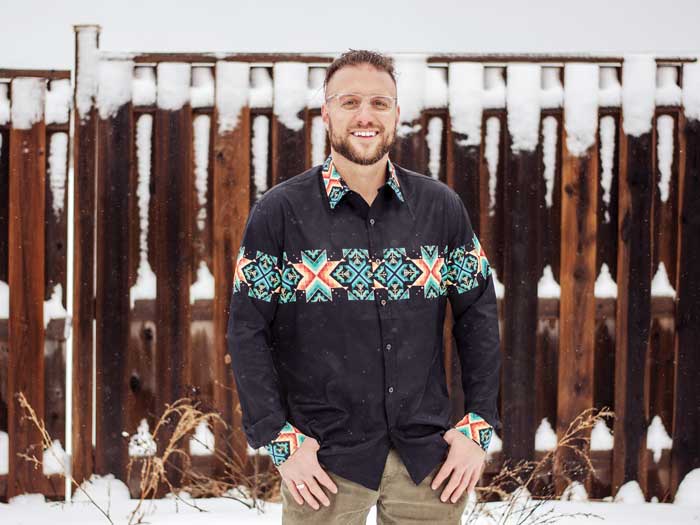 Jacob Taylor, spirit name Wasa Nabin Nini, is the CEO of Indigenous Aerospace (Courtesy of Indigenous Aerospace)
Jacob Taylor, spirit name Wasa Nabin Nini, is the CEO of Indigenous Aerospace (Courtesy of Indigenous Aerospace)
Taylor is a band member of Curve Lake First Nation; his spirit name Wasa Nabin Nini means “the man who sees very far straight ahead.” Fresh from Bachelor’s and Master’s degrees in Indigenous health and policy, Taylor in 2014 launched Pontiac Group, an economic development consulting firm that aimed to expand the connection between Indigenous values and business opportunities.
Mentored by senior Indigenous leaders across the country, Taylor absorbed the Assembly of First Nations’ interest in economic reconciliation: “fostering more ways for Indigenous people to participate in the capitalist society we have operating in Canada, but doing so with a lens that kept our treaty benefits in mind,” he says. “You know—the history of our people in mind.”
Pontiac Group developed partnerships in the medicinal cannabis space before recreational use was legal, and later Taylor was hired to provide community cannabis education for First Nations in Northern Ontario.
Flying into these remote locations, the issue was obvious to Taylor—Canada is a vast country dotted with sparse, isolated locales, sometimes accessible only by plane. Whether it’s a shortage of life-saving medical supplies or $20 for a carton of orange juice, the expense and challenge to reach these communities was a harsh reality for residents.
“When the Chiefs I was working for showed me that news story about that oxygen tank,” Taylor says, “they were very upset and said, ‘You know, we need an answer.’”
Soon after this plea, Taylor was watching the Business News Network and a segment aired about drones. “Sometimes the universe opens up to you,” Taylor says. He sent a message on LinkedIn and, within a week, had an in-person meeting with an industry player.
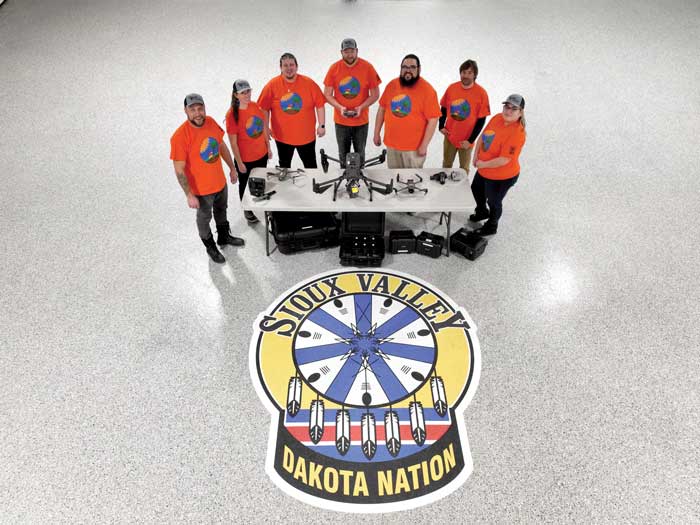 The special team trained and equipped to use LiDar (light detection and ranging) technology fixed to drones to assist in the location of unmarked graves at the Brandon residential school property (Courtesy of Indigenous Aerospace)
The special team trained and equipped to use LiDar (light detection and ranging) technology fixed to drones to assist in the location of unmarked graves at the Brandon residential school property (Courtesy of Indigenous Aerospace)
Taylor founded Indigenous Aerospace in 2021 as a focused push into RPAS, partnering with Volatus Aerospace to leverage their expertise, equipment and training.
“My experiences in other areas of Pontiac Group and the lessons of community and the lessons of academia are all pointing to self-determination,” Taylor says of this moment. “And that is doing the work for ourselves.”
New applications for RPAS are developing constantly, and billion-dollar industries using the technology include construction, infrastructure, energy and utilities, agriculture, natural resources, real estate, law enforcement and the military.
The global drone services market is expected to reach $63.6 billion by 2025, according to market research company Insider Intelligence. Technology and regulations are rapidly evolving together. “It’s really anybody’s ballgame,” Taylor says.
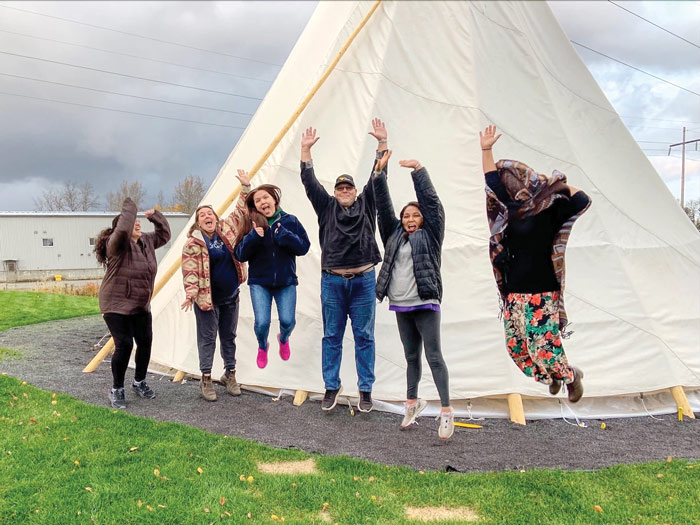 The water protector group of women who use drones to monitor waterways (Courtesy of Indigenous Aerospace)
The water protector group of women who use drones to monitor waterways (Courtesy of Indigenous Aerospace)
In Indigenous communities, RPAS can document mining, forestry and dumping in remote locations; find lost hunters or fishers in search and rescue missions; monitor water levels and wildlife migration; transport water samples for quick testing; and revolutionize supply-chain logistics with cargo drones. During the COVID-19 pandemic, Taylor used drones to move vaccines and samples between island communities and the mainland.
Community enrichment is the essential piece for Taylor. The RPAS industry provides local jobs, sparks interest among youth in STEM fields, and can reduce the brain drain of talented and ambitious Indigenous workers.
“Our applications for it are so broad,” Taylor says. “Everyone else is in the space of a niche market, looking after a certain area, and that’s great. But for us, as Indigenous communities, we can be our own solutions provider, we can integrate all of this into ways that are the best fit for us. And what it does with community development, revenue, and inspiring young people into STEM careers, is really holistic.”
Indigenous Aerospace assists clients with the equipment, education and training to set up their own drone unit, as well as sourcing funding if needed. The firm is currently focused on Ontario communities as it develops and hones its standard operating procedures, before expanding further east and west. Arctic-certified drones are also on the horizon.
Taylor keeps busier than most. Now working on his PhD in Indigenous Health Sciences, he also formed and chairs the inaugural Indigenous Committee at the Aerial Evolution Association of Canada, a not-for-profit industry group.
It was the association’s first committee to represent the values and interests of these communities, for whom the RPAS industry would arguably be game-changing—or literally lifesaving. For First Nations, it’s a seat at the table.
“I’ve always just been really proud of every step, every milestone we achieve,” says Taylor. “If I could work myself out of a job with Indigenous Aerospace, and communities take this over and develop massive, awesome enterprises—then, you know, I really have succeeded in the mission here.”
MORE ON DRONES AND INDIGENOUS CULTURE
Find out how drones are destined to play an ever greater role in deliveries and more. Learn from three Indigenous CPAs how their heritage has influenced their careers, and check out CPA Canada’s introduction to Indigenous People’s cultures.